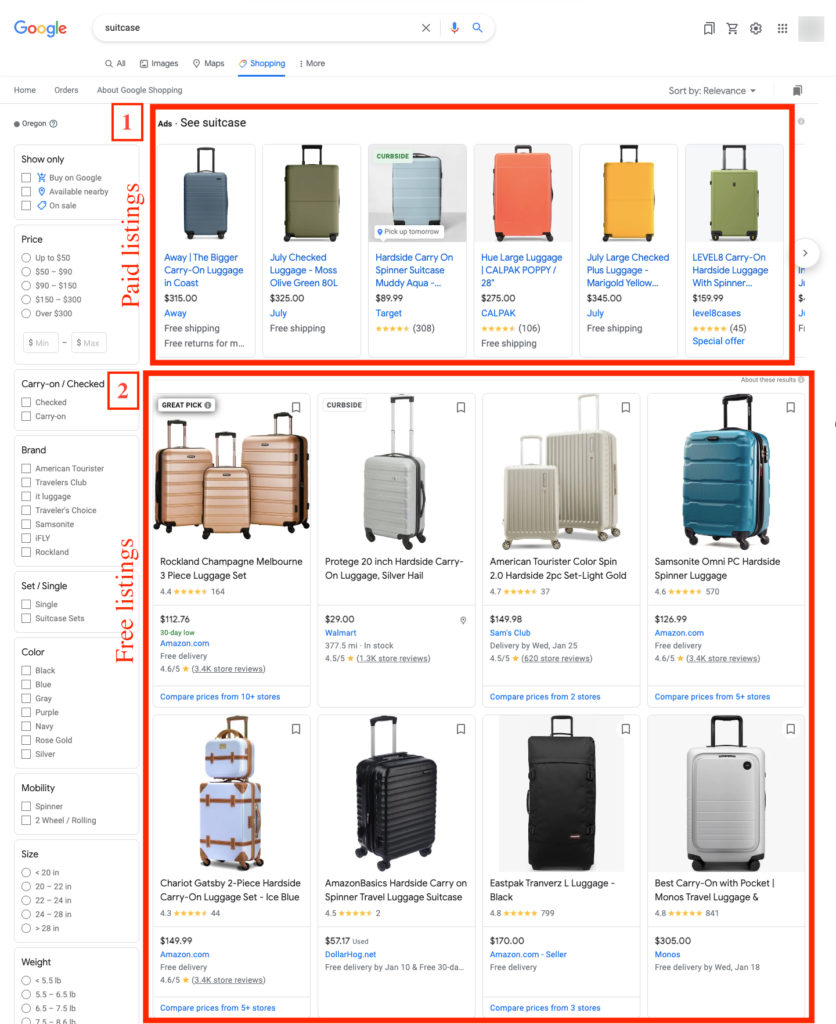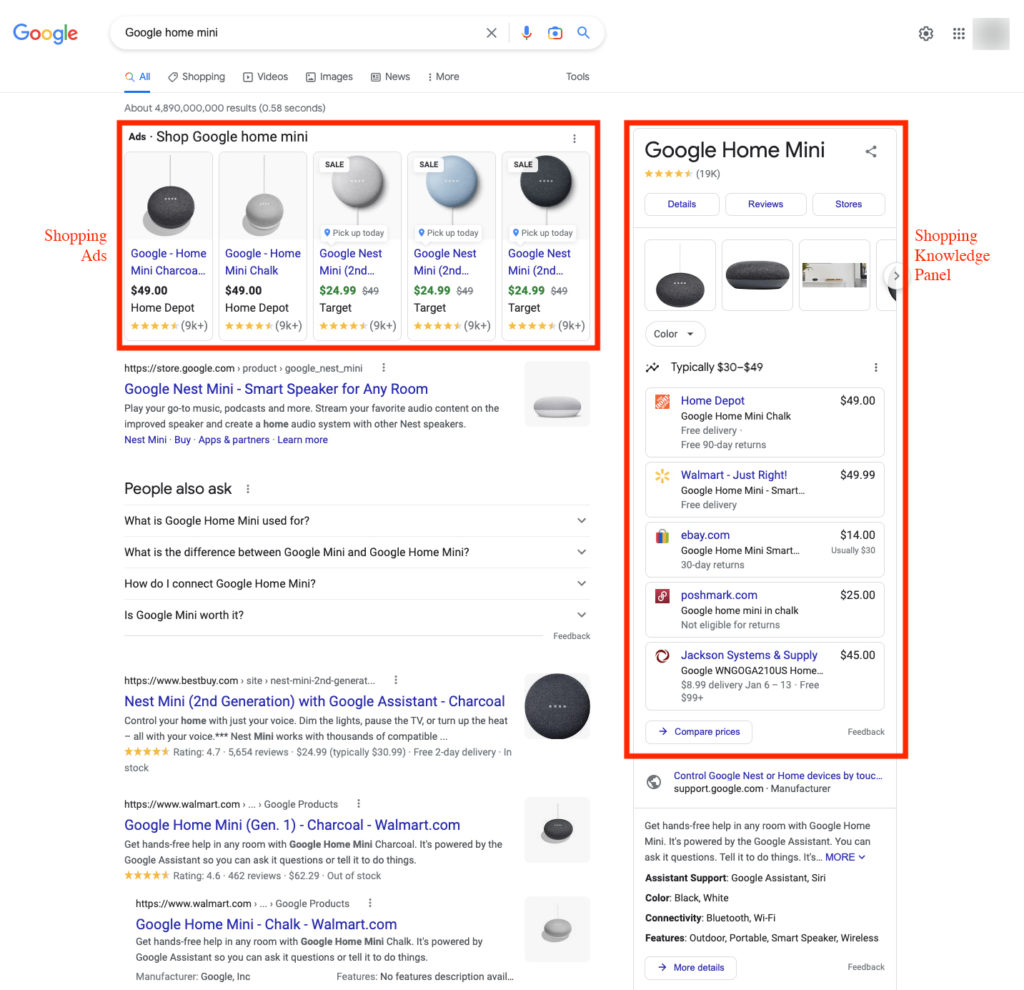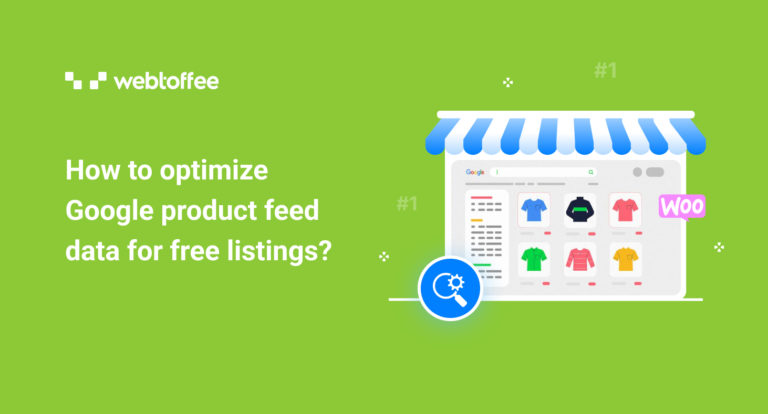Since Google introduced its free product listing program in 2020, there has been a significant change in the eCommerce market. Google’s free listing program was a helping hand, especially for small to medium-sized businesses.
It gave them an opportunity to promote their products on the Google Shopping page and increase the visibility of their store products organically without any cost.
In this article, we will explain everything you need to know about Google’s free listing program and how to optimize Google product feed data for getting better results on the Google Shopping page.
So wasting no time, let’s get started.
What is Google’s free product listing program?
In 2020, Google launched its free listing program aimed to help shoppers to find the right products easily and let store owners promote their products for free. This has significantly increased the clicks and impressions for many eCommerce websites.
Although benefits were distributed among sellers of all sizes, small and medium-sized businesses benefited the most. It was also helpful for shoppers to easily find the products they were looking for with a wide range of options.
According to a report by ROIREVOLUTION, free listings have created more conversions than Shopping Ads.
Shopping Ads are a type of Google Ads, for which eCommerce store owners pay to promote their products on Google Shopping. It offers a simple and flexible way to promote your store products with detailed product descriptions.

The above infographics show that across various industries, free listing has been more effective than Shopping Ads in terms of conversion rate.
How does Google free listing works?
Google free listing works with the help of product feeds. A product feed is a file that contains relevant information about your store products which can be integrated into Google Merchant Center to promote your products on the Google Shopping page.
As websites do need not to pay for appearing on search results, Google’s free product listing also works similarly. However there is no guarantee that your store products will appear on the Shopping page, it will mainly depend on the quality of the product feed with relevant information and product description.
Check out our article on WooCommerce Google product feeds to learn more about product feeds for Google Shopping.
Where do Google free listings show?
Google free listings appear in mainly four places, Google Shopping, Google Images, Google Search, and Youtube. These are the four different destinations at which your store products will be promoted using Google’s free listing program.
1. Product listing on Google Shopping
Shoppers can look for products from the Shopping tab on the Google search page. All they need to do is simply enter the product keyword on the search bar and navigate to the Shopping tab.

From the above screenshot, you can see two different sections for product listings. The first one is paid Ads section, on which Google will be compensated by the sellers to display their products in the top position.
Below you can see the free listings, where sellers need not pay for displaying their store products here. These results rely on the quality of product information for your store products relevant to the user search queries.
2. Product listing on Google Images
Product listing may also appear on Google Images as well. When people look for products on Google and search the images, they can see products that are available for purchase.
By clicking on the product image, the product information will appear beneath it.
Below is an example of product listing on the Google Images page.

Products available for purchase will have a label on the images, letting users know these products can be purchased.
3. Product listing on Google search
You can also find product listings on Google search as well. Customers can find products directly from the search results page. Users can find out more information about pricing, availability, and ratings from these results.

You can see two sections here too. One is the Shopping Ads section which is a paid section to promote your store products. Then you have Shopping Knowledge Panel that displays product information from various sellers.
If you want to include your product data in the Shopping Knowledge section, your product feed data should include strong product identifiers such as Brand, GTIN, MPN, etc.
4. Product listing on Youtube
Product listing may also appear on Youtube as well. When users are watching a video on Youtube, they may see a list of products that can be purchased. Also when a user specifically searches for a product on Youtube, he may see related products on Youtube search results.

Depending on your product data, your products may be eligible to appear in these formats if it includes the product being viewed or searched.
How to optimize Google product feed data for free listings?
Google’s free listing can be really helpful for small to medium businesses to promote their products. Since Google offers this program for free, the competition to acquire the top places is huge. You can’t bid to appear in the top position.
All you have to do is brush up on your SEO strategies and optimize your product feed data to make it more relevant to users’ search queries.
Following are some of the tips to optimize your Google product feed.
1. Optimize your product attributes
Your product attributes play a major role in listing your products on Google Shopping. It is important that your product feed data should be rich with relevant product information so that Google algorithm can list your products for users’ search queries.
You can do keyword research to identify the most relevant keywords for your products. This will help in creating rich attributes for your products.
The following are the three main attributes that need to be optimized for a free listing.
Title
The title attribute is the strongest identifier for your products. You have to optimize it so that your customers can easily find your products. Identify the terms, users search for finding your products, and add relevant keywords accordingly.
Description
The description provides more space to sneak in your relevant keywords. You can make keyword-rich descriptions so that there’s a higher chance of your product getting listed on Google Shopping.
You may also include product details like, color, size, pattern, material, etc. This will help shoppers to choose products easily.
Images
Images are also an important attribute of products. It is the first thing your customers see from the listing. Images act like a virtual showroom for your products. It plays a major role in letting customers decide to purchase your product.
You can add a featured image with a proper view of your product. This featured image needs to be good enough for shoppers to click and view more details. Then you can add additional images with different angles so that your customers will have a complete view of your product.
2. Add additional product identifiers
Apart from the main product attributes you may also add additional product identifiers like Brand, GTIN, MPN, etc. These are unique identifiers for the product assigned by the manufacturer.
Brand – Brand name of the product which is used to identify the manufacturer globally. It should appear on the product packaging.
GTIN – Global Trade Item Number, which is a unique product identifier used internationally. It should appear next to the barcode of your product package.
MPN – Manufacturer Part Number, which includes alphanumeric characters, used to specifically identify a product among all products from the same manufacturer.
3. Optimize landing page speed and user experience
To get the best results for your product feeds, optimize your page speed and user experience for your website. All your efforts will be in vain if you have a website with a high loading time and terrible user experience.
You can review your website loading time using Google’s PageSpeed Insights. Also, look for the bounce rate to analyze users who are leaving your website without making a purchase.
4. Manually map Google product categories
Google has a set of predefined categories, so it is important that you map your store categories with relevant Google product categories.
Rather than letting Google map the product categories automatically, it is better to map the store categories manually to improve your chances of getting top rankings on Google product listings.
5. Use Google customer reviews
Google customer reviews can indirectly contribute to your product listings. Use Google customer reviews to create social proof for your products and services. This provides a free platform to get valuable feedback from your customers who’ve made a purchase from your store.
Conclusion
Small and medium-sized businesses can take advantage of Google’s free listings to increase their product visibility. Google’s intention was clear, to offer a better shopping experience for users and reclaim the lost territory of product searches from Amazon.
Free listings offer an ideal way to increase clicks and impressions for eCommerce websites. Customers can preview product details and find the right products and variations easily.
Store owners should be competitive to grab this free opportunity to promote their products on Google Shopping. The chance of getting your store products displayed on organic listings depends on the quality of the product feeds and product data. So it is important to optimize Google product feed data.
To learn more about creating Google product feeds for WooCommerce, refer to this article. If you want to create quality product feeds for Google Shops and Facebook Shops, try out our WooCommerce product feed plugin.
The purpose of this article was to inform you about how to optimize Google product feed data for free listings. We hope this article has served its purpose. What are your thoughts on this article? Let us know in the comments.




Comments (2)
Richard
January 8, 2024
Hi, is it a requirement to have pages indexed on Google in order to appear in the Shopping Knowledge Panel/Product Knowledge Panel? Or is it only required to have an optimized datafeed?
Thanks,
Richard
Vineetha
January 10, 2024
Hi Richard,
Thanks for reaching out! To the best of our knowledge, an optimized data feed alone may not be sufficient, as the search engine relies on various signals from the web to populate its knowledge panels, including relevant content on indexed pages.